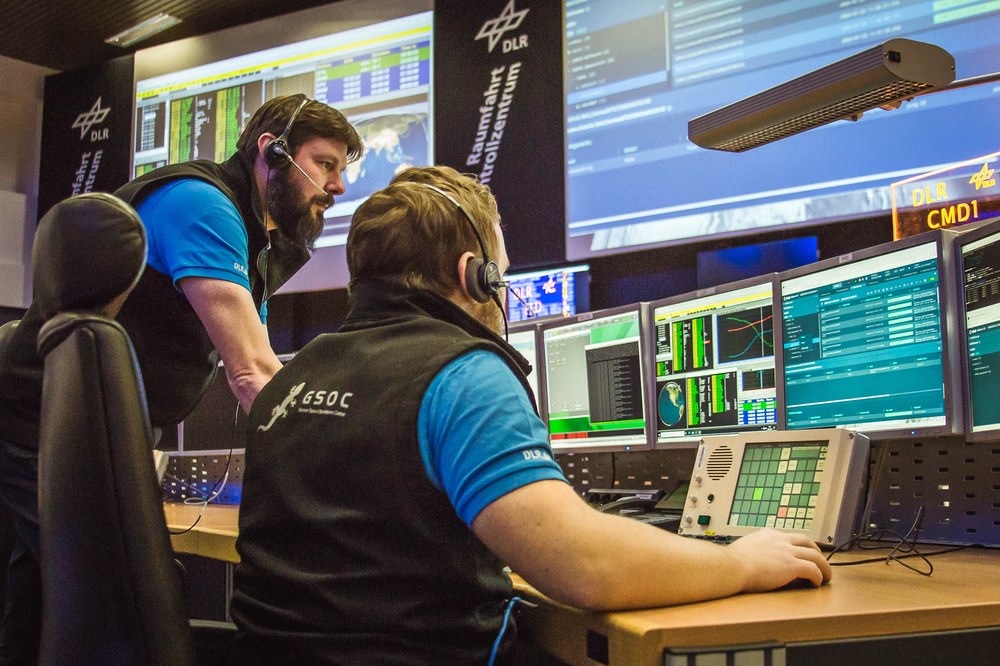German Space Operations Center commands small satellite with next-generation software via Cubesat Space Protocol

Imagine sitting in a café on a sunny day, coffee in hand, impatiently waiting for a reply to a message you’ve just sent with your new smartphone. Minutes pass slowly, and the moments of anticipation just seem to stretch out. This everyday experience of waiting for a reply mirrors the tense wait at the German Space Operations Center (GSOC) in Oberpfaffenhofen for a first message from DLR’s PIXL-I Cubesat. This communication took place via the ‘Cubesat Space Protocol’ – a special transmission protocol for small satellites – and the new European operating system for spaceflight, the EGS-CC ‘European Ground Systems – Common Core’, which is currently being developed.
Concentration was the order of the day as we gathered in semi-darkness around the consoles in the main control room of our control centre. The monitors displayed the cubesat's telemetry data and we waited for the right time to send our commands.
Cooperation and development in Europe
The development process leading up to this decisive moment was long and intensive. The European Ground Systems – Common Core (EGS-CC) had to be extensively customised to meet the specific requirements of the task. Standard modules that complied with European standards for satellite communications were replaced by satellite-specific telemetry and telecommand databases and protocols. This process was accompanied by a thorough series of tests to ensure that the system worked flawlessly. A decisive success factor was the outstanding cooperation between the European Space Agency (ESA) and the EGS-CC community. The intensive exchange of knowledge and experience, as well as the joint effort, contributed significantly to the successful adaptation and implementation of EGS-CC and illustrates the high value of collaboration in the development of advanced space technologies.
We waited patiently for the optimal time to send our command; each of us focussed on the task ahead. With a decisive click, the message was finally sent into space via the CubeSat Space Protocol (CSP) and an ultra-high frequency antenna – a simple action that was nonetheless the result of months of preparation and effort. The seconds that followed were filled with a mixture of tension and anticipation as we waited for the first response. When we received confirmation that our command had not only been received by DLR’s PIXL-I CubeSat but that it had been successfully implemented, a wave of relief and joy spread among the team.
EGS-CC: Modularity expands the range of controllable systems
This success represented not only a significant milestone for our project to command a satellite via EGS-CC and the CSP, but also marked a decisive step forward in our overarching mission: at the German Space Operations Center (GSOC), EGS-CC will not only serve as a command system for satellites that fulfil European standards, but also for those with their own specific protocols and databases. In addition, EGS-CC is to be used for command systems in human spaceflight, such as for the new ‘MCS-R’ operating system for the operation of the European Columbus module of the International Space Station ISS, as well as in test environments such as the LUNA lunar analogue facility at the DLR site in Cologne-Porz. This expansion emphasises the potential of EGS-CC as a versatile and comprehensive tool for a wide range of space applications.
The joy and the collective sigh of relief in the control room were clearly noticeable. Our department head, Steffen Zimmermann, shared this happiness: "It was a big and important step, but many more must follow." He is right, and we will continue to report on this in the future ..
Tags:
